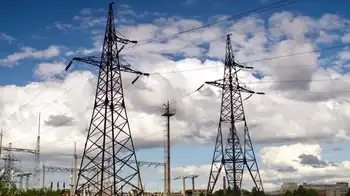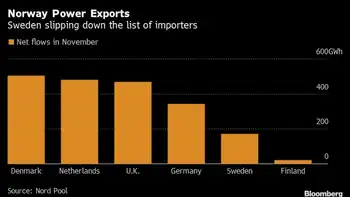Copenhagen puts smart grid companies on power drive
By Reuters
Electrical Testing & Commissioning of Power Systems
Our customized live online or in‑person group training can be delivered to your staff at your location.

- Live Online
- 12 hours Instructor-led
- Group Training Available
Smart grids, which help to manage electricity use more efficiently, have drawn investor interest as utilities step up spending on projects that reduce energy costs.
Copenhagen will be positive for energy efficiency companies like Comverge and EnerNOC and for makers of advanced power meters, such as Itron Inc, said industry experts, who pointed out the technology is critical to the fight against global warming.
"We might see some corporate announcements in Copenhagen around companies making decisions to move further toward energy efficiency," analyst Craig Irwin of Wedbush Morgan Securities said.
A formal summit of more than 120 world leaders will try to break the deadlock on who should cut greenhouse gas emissions, by how much, and who should pay.
The Copenhagen summit raises awareness that utilities are increasingly going to be held accountable, said Michael Picchi, interim chief executive of Comverge.
The conference is seen as a further boost for companies like Badger Meter Inc, Esco Technologies, Echelon Corp and PowerSecure International Inc and follows a stimulus plan unveiled in October for smart grid technology providers.
U.S. President Barack Obama, who announced the $3.4 billion package to help build a smart electric grid, also proposed a target to cut his country's greenhouse gas emissions by 17 percent from 2005 levels by 2020.
The U.S. efforts should provide a good example to others who want to emulate them, said Christine Tezak, a senior research analyst for energy and environmental policy at Robert W. Baird.
Though there will be an increased emphasis on upgrading the technology element of utility grids around the world, some analysts feel it will be a multi-decade process.
Any new emission curbs that are implemented in the developed world are going to require an acceleration of adoption of smart grid technologies, but the developing world is unlikely to take them up in the near term, analyst Stuart Bush of RBC Capital Markets said.
Globally, about $20 billion to $30 billion will be spent on smart grid projects over the next five years, he added.
Analysts do not yet see any significant adoption of smart grid plans by China and India, but they said the European Union would be a big opportunity.
Industry experts, however, do not currently expect legislation that forces companies to act.
"We are going to have an agreement in principle coming out of here (Copenhagen), but not anything binding," said Mike Gordon, the president of privately held CPower, who is attending the Copenhagen conference.
Analysts expect a lot of corporate responsibility in America with Fortune 500 companies taking initiatives to adopt more environmentally responsible policies.
"We need to get to a couple of hundred billion dollars of private sector commitment," Gordon said.











